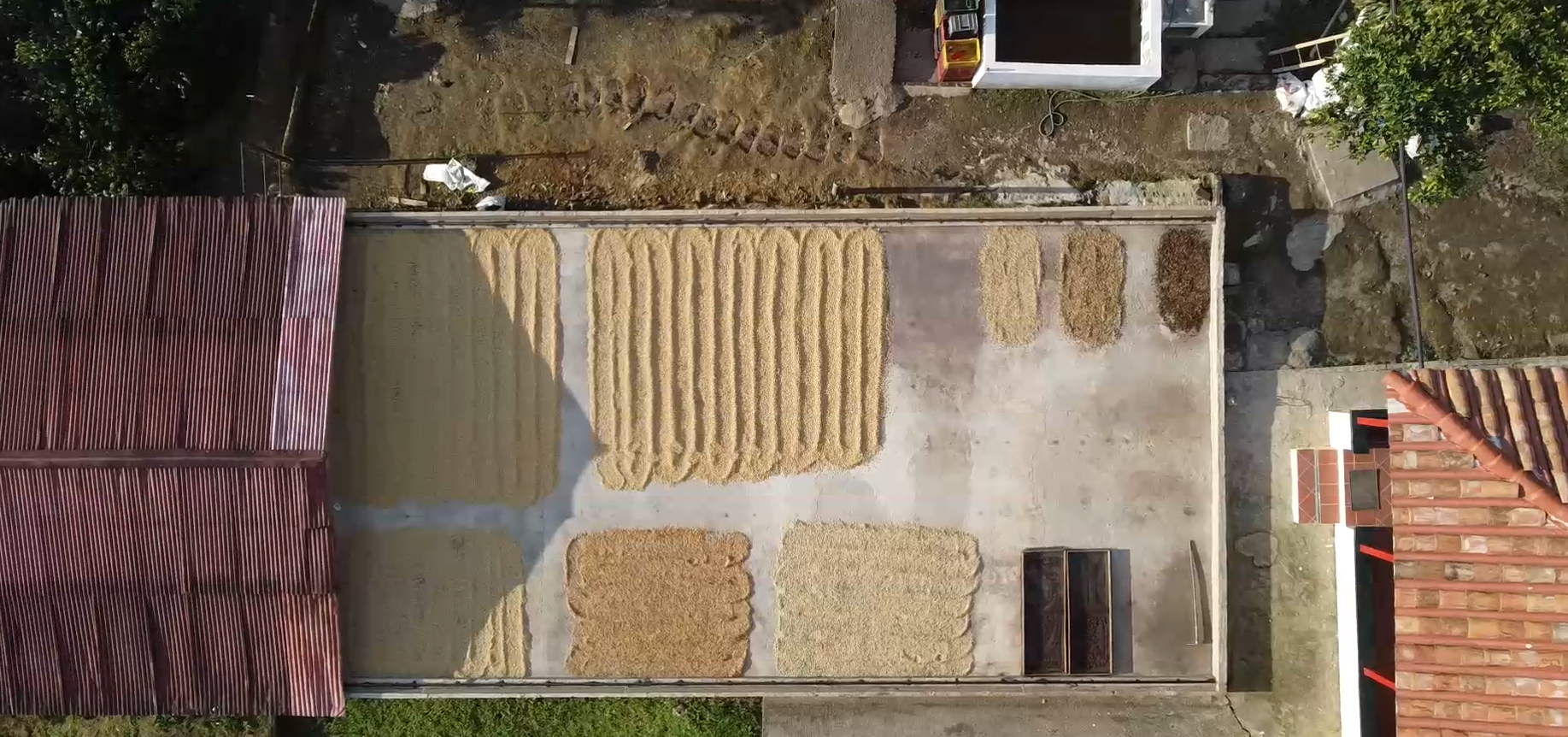
What are Coffee Processes?
Kevin Webb
Feb 15, 2022
Understanding Coffee Processes
If you were anything like me, you didn’t know a single thing about coffee processes. I mean, what even is a process?
Roast levels, I had heard of. A dark roast tastes more bitter than a light roast. We got that.
But what are processes and how do they change the taste of a cup? Do they really make any difference? And when do they happen?
Don’t worry, we have your back. Sit down and enjoy this read, and you’ll soon become a coffee export too.
And if you want to taste the processes: you can purchase coffees here.
What is a Coffee Process?
As you know now (and if you don’t, check out this article on the 10 Steps to Produce your Own Coffee here), there are several steps between harvesting a coffee cherry and bringing it to your coffee cup.
Processes are different ways in which you can process the coffee cherry to transform it into a coffee bean.
Processes are not about roasting. That’s a whole different ball game. Processes happen between the harvest and the moment the coffee is sent to the roaster.
What do coffee processes do to the coffee?
Processes, essentially, are a way to get rid of the coffee cherry (which we don’t want) and stay with the coffee bean (which we love). They can also give certain additional flavors to the coffee beans.
Removing the Coffee Cherry or not Removing the Coffee Cherry?
We know that, at some point, the coffee bean needs to be dried. But should you dry it with or without the cherry around the bean? That’s the choice between natural coffee - where the whole coffee cherry is dried, with the bean inside - and washed coffee - where the cherry is removed, and only the bean is dried.
Natural Coffee
While the “natural” way used to be the most popular method back in the day, washed coffee has now slowly taken over - at least in Colombia.
Natural coffees are still very popular in certain African countries (where machinery to remove the coffee cherry isn’t widely available) and is used in Colombia as a “special” process. However, the vast majority of coffees in Colombia are now washed. If you’re still craving natural coffees, don’t worry! We offer certain special editions of Colombian natural coffee.
Washed Coffee
Washed coffee has a few advantages. First, it takes much less time to dry. Instead of having to wait for a whole juicy cherry to dry, you just have to wait for the small little coffee bean to dry. The coffee bean has much less moisture, and needs much less sun to dry. Once dried, the coffee is also lighter, and takes less space to move around (after all, you got rid of your whole cherry!).
Natural coffee has the advantage of further protecting the coffee bean from the sun rays, and the surrounding environment. Because the coffee bean remains in the cherry longer, natural coffees tend to express more flavors of the cherry, including fruitiness.
Is one process better than the other? No, but they yield very different cups!
On the left, natural coffee: the cherry is all dried, and the bean is inside. On the right, washed coffee. That’s the bean right there, protected by the parchment skin.
Fermented Coffee
If you recall high school science, you’ll know that fermentation is the process by which sugar is transformed into alcohol by microorganisms.
In the traditional Colombian way, once you discard the coffee cherry to reveal the beans, you let the beans ferment for a day. That’s because, once the beans are removed from the cherry, they remain wrapped in a gooey, sugary substance called the mucilage. By letting the beans ferment for 24 hours, you let fermentation naturally get rid of a good amount of the mucilage, and the beans are easier to wash afterwards, and then dry.
But fermentation can also be used as a process, to make the coffee beans taste different. If you ferment your beans for 24 hours, you won't taste much of a difference. But if you ferment them for longer… two days to a week, the beans will start to capture certain notes from the fermentation. That can yield citric coffees, with deep, wine-like flavors and can be very pleasant when well done. Our Patrona coffee is a great example of a very well-executed double fermentation.

Drying Coffee Beans
This is the last step! Once your coffee is almost ready to go… you need to dry it. Here, many methods exist
If you’re in a hurry, you can dry your coffee in a silo. It’s basically a big oven that slowly dries your coffee, albeit faster than the sun. It generally tends to produce coffee of a marginally lower quality, because of the rapidity of the drying and, sometimes, the fumes from the gas ovens.
The traditional way is to dry coffee using the good old sun. All you need to do is lay your coffee on a smooth surface (concrete works great) or, if you want to speed up the process a little, on African beds. African beds are slightly elevated wood beds which allow for better air circulation and faster drying.
This process can take anywhere from one to three weeks, depending on rainfall. Unfortunately, global warming has affected the climate of many regions, and some suffer larger and more frequent rainfall, which in turn hampers farmers’ ability to dry their coffee on time.

Our friend, David, showing us his beautiful African beds, drying excellent honey coffee.
New Coffee Processes?
Innovative farmers come up with new ideas every day. Anything can be done: from double-fermentations, to soaking the coffee beans with other fruits infusing them with flavors, to drying the coffee with coal to give the coffee a smoky taste. Those new processes create distinctively unique coffees and the possibilities are endless.
Ana Maria, Alejandro and Jose David are part of this new, innovative generation. And as they create new, exciting coffees, we will be thrilled to share them with you!

← Older Post Newer Post →



